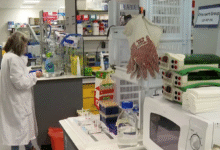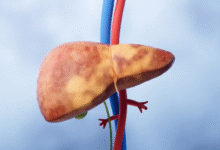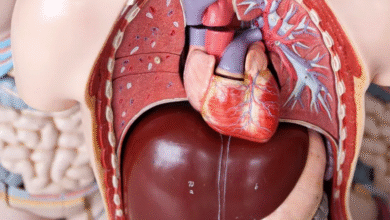Title: Keratoconus: A Silent Vision-Threatening Disease and the Importance of Early Detection

Keratoconus is a progressive and chronic eye condition that primarily affects teenagers and young adults. Because its early symptoms are often subtle or unclear, the disease can go unnoticed until it has significantly affected vision, making early awareness and diagnosis essential.
Both genetic factors and environmental influences—such as allergies and frequent eye rubbing—play key roles in triggering and accelerating the condition. Thanks to advances in modern ophthalmology, including corneal cross-linking, specialized lenses, and corneal transplantation, patients now have greater chances of preserving their vision and improving their quality of life. Preventive behaviors, especially avoiding eye rubbing, remain crucial in limiting complications.
What Is Keratoconus?
According to ophthalmologist Dr. Diaa Al-Batoush, keratoconus is a disorder in which the cornea becomes thinner and begins to bulge outward in a cone-like shape. This change disrupts how light enters the eye and leads to blurry or distorted vision that often cannot be fully corrected with glasses.
Dr. Al-Batoush explains that the condition is relatively common in the Middle East, with studies estimating its prevalence at around 1.7% of the population, a notably high figure. Increased awareness and improved diagnostic tools are expected to raise detection rates in the coming years.
Teenagers and young adults are the most at risk, but the condition can also appear in childhood—especially in children with chronic allergies or a family history of the disease. Detecting keratoconus early during these stages significantly improves treatment outcomes.
Why Do Some People Develop Keratoconus?
Although the exact cause remains unclear, Dr. Al-Batoush notes that both genetic and environmental factors contribute to the development of keratoconus.
Key points include:
- Only 10% of cases are linked to genetics, with no consistent hereditary pattern
- Higher risk among individuals with chronic allergies, asthma, or connective tissue disorders
- Increased incidence in people with Down syndrome
- Frequent eye rubbing is considered one of the strongest environmental risk factors and may accelerate the progression of the disease
Warning signs include frequent changes in eyeglass prescriptions, unusually high degrees of myopia or astigmatism in young people, and vision that does not improve well with glasses. When multiple family members are affected, it is recommended to screen the remaining relatives early.
Impact on Daily Life
The burden of keratoconus varies depending on its severity. Mild cases may be managed with glasses, but advanced stages can interfere with basic daily tasks such as driving, reading, and using digital devices. This often creates emotional, functional, and even financial challenges—particularly when surgical intervention becomes necessary.
Procedures such as corneal cross-linking or corneal transplantation may require long-term follow-up, adding to the patient’s overall burden.
Diagnosis and Treatment Options
Ophthalmologist Dr. Mohammed Al-Khasawneh explains that diagnosis begins with a visual acuity test. If astigmatism is detected, corneal imaging using corneal topography is recommended. This technology accurately maps the corneal surface and thickness and can identify the disease even before symptoms appear.
Current Treatment Options
1. Corneal Cross-Linking (CXL)
- Strengthens the cornea and aims to slow or stop progression
- Performed immediately once disease progression is detected
- Can be used preventively in younger patients
2. Specialized Contact Lenses
- Rigid Gas Permeable (RGP) lenses: For moderate to advanced cases
- Hybrid lenses: For patients intolerant to rigid lenses
- Scleral lenses: Large lenses used for advanced keratoconus, covering the entire cornea and offering stable, comfortable vision
With proper care and regular follow-up, contact lenses may be used safely long-term.
Corneal Transplantation
Dr. Al-Khasawneh states that corneal transplantation is considered when glasses and lenses fail to provide adequate vision, or when scarring or severe corneal distortion occurs.
Success rates range from 90–95%, and many patients achieve vision of 6/9 or even better after recovery.
Modern advancements also include:
- Intracorneal ring segments (ICRS)
- Laser-assisted correction combined with cross-linking
- Implantation of special lenses inside the eye
Future innovations under study include stem cell therapy derived from the patient’s own fat tissue to strengthen the cornea, and AI-based prediction models to assess disease progression early.
Essential Prevention and Care Tips
Both specialists emphasize several key steps:
- Avoid rubbing the eyes
- Treat allergies, itching, redness, and dry eye promptly
- Do not delay cross-linking when recommended
- Screen family members when one person is diagnosed
- Use UV-protective eyewear outdoors
- Wear protective goggles during sports or high-risk activities
- Apply lubricating eye drops regularly
- Schedule routine eye examinations








